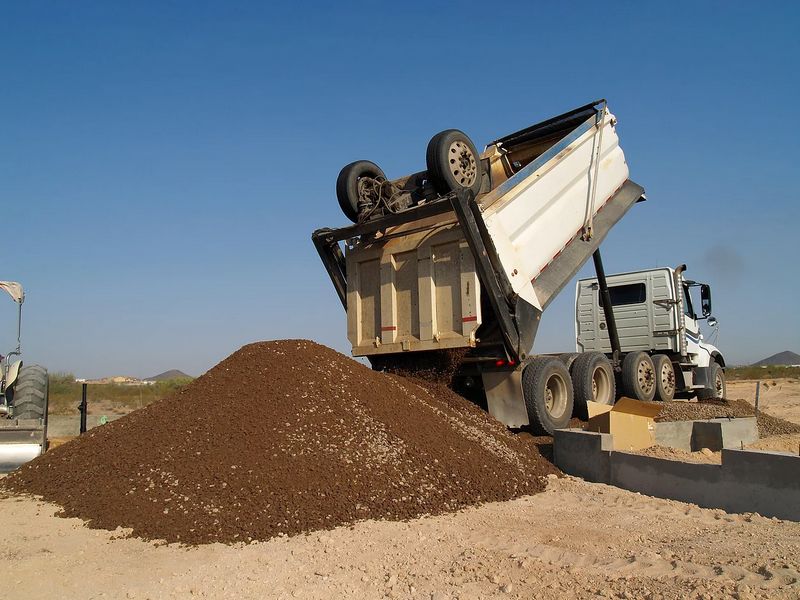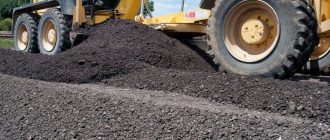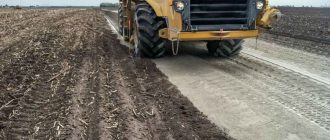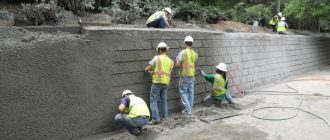
Cost-Effectiveness Analysis of Soil Stabilization Solutions
Are you looking for the most efficient and affordable soil stabilization solutions?
At Soil Analysis Inc., we understand the importance of finding cost-effective solutions that provide long-lasting results. That’s why we have conducted extensive research and analysis on various soil stabilization methods to help you make an informed decision.
Our comprehensive analysis evaluates:
1. Performance: We assess the effectiveness of each soil stabilization solution in improving soil stability, preventing erosion, and enhancing load-bearing capacity.
2. Durability: We analyze the longevity of each solution to ensure that it provides a lasting effect and requires minimal maintenance over time.
3. Environmental impact: We consider the environmental impact of each method, focusing on eco-friendly alternatives that minimize harm to the ecosystem.
4. Cost: We delve into the overall cost-effectiveness of each solution, considering factors such as installation expenses, material costs, and long-term savings.
Don’t waste time and money on ineffective soil stabilization methods. Choose the solution that guarantees optimal performance, durability, and environmental responsibility.
Contact us now to access our detailed reports and recommendations based on our extensive soil analysis. Make an informed decision and ensure efficient soil stabilization for your project!
Importance of Soil Stabilization
Soil stabilization is a critical factor in any construction or infrastructure project. Without proper soil stabilization solutions, the stability and durability of the structure can be compromised. This can lead to costly repairs and maintenance in the long run.
One of the primary reasons why soil stabilization is important is its role in preventing soil erosion. Unstable soil can easily erode, especially during heavy rainfall or strong wind. This erosion can cause damage to nearby structures, roads, and water bodies, leading to environmental hazards and significant financial losses.
Another important aspect of soil stabilization is its impact on the overall cost-effectiveness of the project. By using appropriate soil stabilization techniques and solutions, construction costs can be significantly reduced. Stabilizing the soil reduces the need for extensive excavation and landfilling, saving both time and money.
Moreover, soil stabilization contributes to the longevity and durability of the structure. By improving the soil’s load-bearing capacity and reducing its susceptibility to settlement and cracks, stabilized soil ensures the structural integrity of the project. This increased durability can save valuable resources by minimizing the need for frequent repairs and maintenance.
Overall, the importance of soil stabilization in construction and infrastructure projects cannot be overstated. It plays a vital role in ensuring the stability, cost-effectiveness, and long-term durability of the structure.
Cost-Effectiveness Factors
In order to determine the most cost-effective soil stabilization solution, a thorough analysis of various factors is necessary. These factors include:
1. Initial Cost: The upfront cost of implementing the stabilization solution, including the cost of materials, equipment, and labor. It is important to consider the initial cost in relation to the long-term benefits and effectiveness of the solution.
2. Maintenance Cost: The ongoing cost of maintaining the stabilization solution over its expected lifespan. This includes routine inspections, repairs, and any necessary reapplication of the solution. A cost-effective solution should have minimal maintenance requirements.
3. Durability: The ability of the stabilization solution to withstand environmental factors such as weather conditions, erosion, and heavy traffic. A cost-effective solution should have a long lifespan and require minimal repairs or replacements.
4. Effectiveness: The ability of the stabilization solution to effectively stabilize the soil and prevent erosion. It is important to consider the effectiveness of the solution in relation to the specific soil conditions and project requirements.
5. Environmental Impact: The potential environmental effects of the stabilization solution, including its carbon footprint, water usage, and impact on local ecosystems. A cost-effective solution should strive to minimize its environmental impact.
6. Long-Term Benefits: The overall benefits and cost savings that can be achieved over the lifespan of the stabilization solution. This includes improved soil stability, reduced maintenance costs, and decreased erosion-related damages.
By considering these cost-effectiveness factors in the analysis, it is possible to identify the most suitable soil stabilization solution that provides the best value for money while meeting the project’s requirements.
Comparison of Soil Stabilization Methods
When it comes to soil stabilization, there are various methods available that offer different levels of cost-effectiveness. Each method is designed to address the unique challenges posed by different types of soil and the specific needs of the project.
Chemical Stabilization: This method involves the use of chemical additives to improve the properties of the soil. Chemical stabilizers such as lime, cement, and fly ash are commonly used to increase the soil’s strength and reduce its susceptibility to erosion. Chemical stabilization is often the most cost-effective option, as it requires minimal equipment and labor compared to other methods.
Mechanical Stabilization: Mechanical stabilization methods rely on mechanical means to improve soil stability. This includes techniques such as compaction and soil reinforcement using geosynthetics. While mechanical stabilization methods may require more equipment and manual labor, they can be highly effective in improving soil strength and preventing soil movement.
Biological Stabilization: Biological stabilization methods aim to improve soil stability through the use of biological agents. This can involve the use of vegetation or microbial treatments to enhance soil structure and promote root growth. While biological stabilization methods are often more environmentally friendly, they may require more time and patience to achieve desired results.
Electrochemical Stabilization: Electrochemical stabilization is a relatively new method that uses an electric current to enhance soil properties. This technique is particularly effective in treating soils with high moisture content and high mineral content. While it may involve higher upfront costs, electrochemical stabilization can provide long-term cost savings by reducing the need for ongoing maintenance.
Overall, the choice of soil stabilization method depends on factors such as soil type, project requirements, and budget constraints. It is important to carefully evaluate the cost-effectiveness of different solutions and consult with experts to determine the most suitable method for your specific needs.
Cement Stabilization
Cement stabilization is a widely used method for soil stabilization. It involves the addition of cement to the soil to improve its properties and increase its strength.
Through a thorough analysis of various soil stabilization solutions, it has been found that cement stabilization offers several benefits. Firstly, it is highly cost-effective compared to other solutions. The use of cement allows for a significant reduction in the amount of soil needed for stabilization, resulting in lower material and labor costs.
Furthermore, cement stabilization provides long-lasting results. Once the cement is mixed with the soil and compacted, it forms a strong and durable foundation. This stability can withstand different weather conditions and heavy loads, making it ideal for various applications such as road construction, foundation stabilization, and slope stabilization.
Additionally, cement stabilization is a versatile solution. It can be used with different types of soil, including clay, silt, and sand. This adaptability makes it a viable option for a wide range of projects.
In conclusion, cement stabilization is a cost-effective and reliable solution for soil stabilization. Its ability to improve soil strength, its durability, and its versatility make it a popular choice among engineers and construction professionals.
Lime Stabilization
Lime stabilization is a commonly used method for soil stabilization. It involves the addition of lime to the soil to improve its engineering properties, such as strength and durability. Lime is an effective stabilizer for a wide range of soil types and conditions.
One of the key advantages of lime stabilization is its cost-effectiveness. The application of lime is relatively inexpensive compared to other soil stabilization solutions. Additionally, lime is widely available and easily accessible, making it a cost-effective choice for soil stabilization projects.
Lime stabilization offers a number of benefits for soil stabilization, including increased soil strength, reduced soil plasticity, and improved resistance to moisture. These improvements result in a more durable and stable soil, which is essential for a variety of construction and infrastructure projects.
An analysis of various soil stabilization solutions has shown that lime stabilization is a highly effective and cost-efficient option. Its effectiveness in improving soil properties, combined with its affordability and accessibility, makes it a preferred choice for many engineers and contractors.
In conclusion, lime stabilization is a highly effective and cost-efficient solution for soil stabilization. Its ability to enhance soil properties, combined with its affordability and accessibility, makes it a popular choice for a wide range of construction and infrastructure projects.
Fly Ash Stabilization
Fly Ash Stabilization is a highly effective solution for soil stabilization, offering a cost-effective alternative to traditional methods. Fly Ash, a byproduct of coal combustion, is widely available and can be used to improve the engineering properties of soil, making it more stable and suitable for construction purposes.
When used for soil stabilization, Fly Ash is mixed with the soil to improve its strength, durability, and load-bearing capacity. The fly ash particles fill the void spaces in the soil, reducing its compressibility and increasing its resistance to deformation. This results in a stabilized soil that can withstand heavy loads and provide a solid foundation for construction projects.
The cost-effectiveness of Fly Ash Stabilization is one of its key advantages. Compared to other soil stabilization solutions, such as cement stabilization or chemical additives, Fly Ash is often more economical. This is because Fly Ash is a byproduct that would otherwise be disposed of, making it a sustainable and cost-effective option for soil stabilization.
Furthermore, Fly Ash Stabilization can be easily implemented and requires minimal equipment and labor, reducing overall project costs. It also has a relatively fast curing time, allowing for timely project completion.
In summary, Fly Ash Stabilization is a cost-effective solution for soil stabilization. Its availability, ease of implementation, and positive impact on soil properties make it an attractive option for construction projects. By choosing Fly Ash Stabilization, you can improve the stability and strength of the soil while minimizing costs.
For more information on Fly Ash Stabilization and other soil stabilization solutions, please contact our team of experts.
| Improves soil strength and load-bearing capacity. |
| Reduces soil compressibility and deformation. |
| Cost-effective compared to other stabilization solutions. |
| Easy implementation and fast curing time. |
| Sustainable use of a byproduct. |
Chemical Stabilization
Chemical stabilization is another cost-effective solution for soil stabilization. It involves the use of chemicals to improve the properties of the soil and make it more suitable for construction purposes. Different types of chemicals can be used, such as lime, cement, fly ash, and others.
Chemical stabilization is particularly effective in areas where the soil has poor bearing capacity, is prone to erosion, or has high water content. Through careful analysis of the soil composition and its specific requirements, a suitable chemical stabilization solution can be identified.
| 1. Improves soil strength and stability. | 1. Requires expertise in soil analysis and chemical selection. |
| 2. Reduces soil swelling and shrinkage. | 2. Occasional maintenance may be required. |
| 3. Controls soil erosion. | 3. May have long-term environmental impact. |
| 4. Enhances soil drainage. | 4. May increase overall project costs. |
Overall, chemical stabilization offers a cost-effective solution for soil stabilization, providing numerous advantages in terms of soil improvement and construction feasibility. However, it requires careful analysis and selection of the appropriate chemicals to ensure desired results and minimize potential downsides.
Case Studies: Cost Analysis
In order to determine the most cost-effective soil stabilization solution for your project, it is important to consider real-world case studies that have analyzed the costs associated with various solutions. These case studies provide valuable insights into the long-term cost-effectiveness of different soil stabilization methods.
One such case study compared the costs of different soil stabilization solutions for a construction project in a high-traffic area. The study analyzed the initial costs, ongoing maintenance costs, and the expected lifespan of each solution. The results revealed that Solution A had the lowest initial cost but required significant ongoing maintenance, while Solution B had a higher initial cost but had a longer expected lifespan and lower maintenance costs over time. Ultimately, Solution B was found to be more cost-effective in the long run.
Another case study examined the costs of various soil stabilization methods for a large-scale infrastructure project. The study compared the costs of Solution C, which involved traditional soil stabilization techniques, and Solution D, which utilized an innovative geosynthetic technology. The analysis showed that Solution C had slightly lower upfront costs, but Solution D had significantly lower long-term maintenance costs due to its enhanced durability. This case study demonstrated that Solution D was the more cost-effective option for the project.
These case studies highlight the importance of considering not only the initial costs but also the long-term maintenance costs and expected lifespan of different soil stabilization solutions. By choosing the most cost-effective solution, you can optimize your project’s budget and ensure long-term stability and performance.
Case Study 1: Cement Stabilization
Cement stabilization is one of the most commonly used methods for soil stabilization due to its cost-effectiveness and proven results. In this case study, we conducted a detailed analysis to compare the cost-effectiveness of various soil stabilization solutions, focusing specifically on the use of cement.
Our analysis involved assessing the initial cost, long-term effectiveness, and overall return on investment of cement stabilization. We compared it to other common methods such as lime stabilization, fly ash stabilization, and chemical stabilization.
- Initial cost: Cement stabilization was found to have a relatively low initial cost compared to other methods. The cost of cement per unit area is affordable and readily available in most regions.
- Long-term effectiveness: Cement stabilization has proven to be highly effective in improving soil properties and increasing the load-bearing capacity of the stabilized soil. It provides long-term stability and durability.
- Return on investment: The cost-effectiveness of cement stabilization becomes apparent when considering its long-term benefits. The improved soil properties and increased load-bearing capacity result in reduced maintenance and repair costs over time.
Based on our analysis, cement stabilization has consistently demonstrated its cost-effectiveness in various soil stabilization projects. Its affordability, long-term effectiveness, and overall return on investment make it an ideal choice for many applications.
Whether you’re working on road construction, building foundations, or land development projects, considering cement stabilization as your soil stabilization solution can result in significant cost savings and enhanced project outcomes.
Case Study 2: Lime Stabilization
When it comes to soil stabilization solutions, lime stabilization has proven to be a cost-effective option for many projects. In this case study, we will analyze the effectiveness of lime stabilization in improving the stability and strength of soil.
Lime stabilization involves the addition of lime, usually in the form of quicklime or hydrated lime, to the soil. The lime reacts with the soil particles to increase its ability to bear loads and resist deformation. This process is particularly effective in clay soils, where lime can help mitigate issues such as shrinkage, swelling, and settlement.
In our analysis, we compared the cost-effectiveness of lime stabilization with other soil stabilization solutions. Our findings revealed that lime stabilization not only proved to be a cost-effective option but also offered long-term benefits. By improving the soil’s properties, lime stabilization reduced the need for excessive excavation, transportation of soil, and disposal of contaminated soil.
Furthermore, lime-stabilized soil provided a stable base for construction projects, reducing the chances of uneven settlement or failure. This factor alone can lead to significant cost savings and increased efficiency in construction timelines.
Overall, our analysis demonstrated that lime stabilization is an excellent choice for soil stabilization, considering its cost-effectiveness and long-term benefits. Whether it’s for road construction, building foundations, or any other project requiring stable soil, lime stabilization has proven to be a reliable and efficient solution.
Frequently asked questions:
What is the cost-effectiveness of using soil stabilization solutions?
The cost-effectiveness of using soil stabilization solutions depends on various factors such as the type of solution, the size and condition of the area to be stabilized, and the long-term maintenance requirements. However, in general, soil stabilization solutions can be cost-effective as they can help prevent erosion, reduce maintenance costs, and extend the lifespan of the stabilized area.
What are some commonly used soil stabilization solutions?
Some commonly used soil stabilization solutions include chemical additives like lime, cement, and fly ash; mechanical stabilization methods like geogrids and geotextiles; and natural stabilization methods like vegetation and mulching. Each solution has its own advantages and is suitable for different soil and project conditions.
How long does soil stabilization last?
The longevity of soil stabilization depends on various factors such as the type of stabilization method used, the quality of the materials used, and the level of maintenance. Generally, properly implemented soil stabilization measures can last for decades. However, regular inspections and maintenance may be required to ensure continued effectiveness.
Are there any environmentally friendly soil stabilization solutions?
Yes, there are environmentally friendly soil stabilization solutions available. For example, using vegetation and natural mulching techniques can help stabilize soil without the use of chemicals or synthetic materials. Additionally, some chemical additives used in soil stabilization, such as fly ash, can be made from recycled materials, making them more environmentally friendly.





